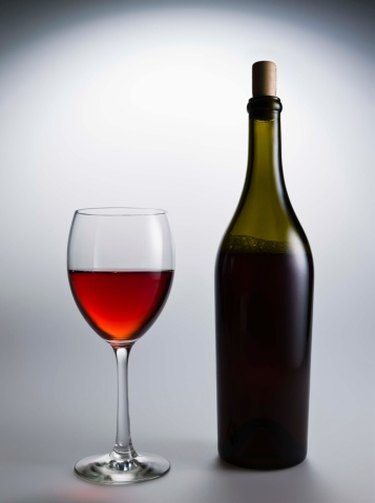
Labels on alcoholic beverages often disclose a measurement of the alcohol content of the product, but not everyone knows how to interpret that information. A bottle of wine may be labeled as 8 percent abv, while a distilled spirit may be described as 80 proof. The difference between alcohol percentage and proof is simple to calculate, and once you know how to do it, you won't be left guessing in the grocery store aisles again.
Chemical Overview
Video of the Day
In organic chemistry there are actually many different molecules that fall under the category of alcohol, characterized by the presence of one or more hydroxyl, or oxygen-hydrogen, groups. The alcohol found in beverages is ethyl alcohol, also commonly known as ethanol, drinking alcohol, pure alcohol or grain alcohol. It is a small alcohol molecule, with a molecular formula of C2H6O.
Video of the Day
Measurements
Alcohol by volume, or abv, is a percentage that expresses how many milliliters of alcohol are present for every hundred milliliters of liquid at 20 degrees Celcius. Alcohol proof is expressed by doubling the percent alcohol of a beverage. Absolute alcohol is 100 percent alcohol by volume, or 200 proof, which is highly toxic.
Examples
Fermented beverages have lower alcohol percentages because the yeast that causes fermentation cannot survive in high alcoholic content. Beer ranges from 4 to 6 percent alcohol, typically, meaning it is 8 to 12 proof. The alcohol by volume, or abv, in wine may range between 7 and 14 percent, or 14 to 30 proof. Distilled alcohol, though, is present in much higher concentrations, ranging from 40 to 95 percent alcohol by volume, or 80 to 190 proof.
Volume Taxation
One of the reasons why it is important for distributors and retailers to specify the alcohol content of beverages is for tax purposes. Volume taxes, also called per unit taxes, are those that are imposed based on the amount of alcohol present in a product. The higher the alcohol content, the higher the volume taxes. In the U.S. laws pertaining to volume, taxes are variable from state to state.